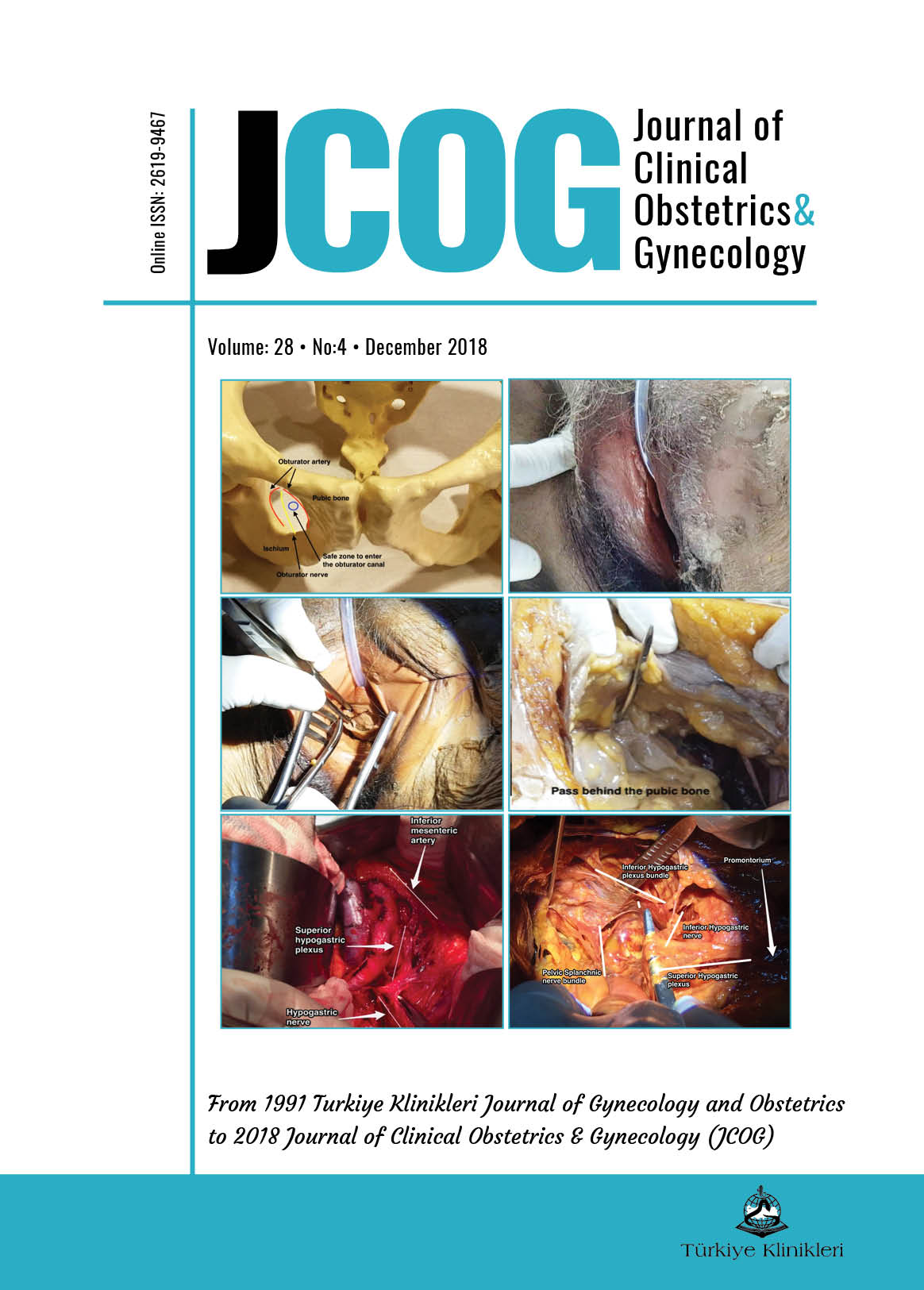Open Access
Peer Reviewed
REVIEW
2245 Viewed2559 Downloaded
Anatomical and Functional Basis of Pelvic Autonomic Nerves with Regard to Radical Hysterectomy
J Clin Obstet Gynecol. 2018;28(4):163-9
DOI: 10.5336/jcog.2018-63397
Article Language: EN
Article Language: EN
Copyright Ⓒ 2025 by Türkiye Klinikleri. This is an open access article under the CC BY-NC-ND license (http://creativecommons.org/licenses/by-nc-nd/4.0/)
ABSTRACT
Radical hysterectomy is a surgery performed to excise all the peri-cervical tissues that have been affected by the spread of cervical carcinoma. During this procedure, the pelvic autonomic nerves are mostly injured due to the resection of ventral, caudal and lateral parts of parametrium, thus resulting in deficiencies of urologic, anorectal, and sexual functions. The urologic complications, especially bladder atony, lead to the most common surgical morbidity. Superior hypogastric plexus, hypogastric nerve, pelvic splanchnic nerves, and inferior hypogastric plexus provide sympathetic and parasympathetic innervation to the pelvic viscera. Selective protection of these nerves would definitely improve bladder functions; this approach is known as a nerve-sparing radical hysterectomy. A detailed knowledge of pelvic autonomic nerves, with regard to anatomical and clinical perspective, will improve the surgical outcomes.
Radical hysterectomy is a surgery performed to excise all the peri-cervical tissues that have been affected by the spread of cervical carcinoma. During this procedure, the pelvic autonomic nerves are mostly injured due to the resection of ventral, caudal and lateral parts of parametrium, thus resulting in deficiencies of urologic, anorectal, and sexual functions. The urologic complications, especially bladder atony, lead to the most common surgical morbidity. Superior hypogastric plexus, hypogastric nerve, pelvic splanchnic nerves, and inferior hypogastric plexus provide sympathetic and parasympathetic innervation to the pelvic viscera. Selective protection of these nerves would definitely improve bladder functions; this approach is known as a nerve-sparing radical hysterectomy. A detailed knowledge of pelvic autonomic nerves, with regard to anatomical and clinical perspective, will improve the surgical outcomes.
MENU
POPULAR ARTICLES
MOST DOWNLOADED ARTICLES





This journal is licensed under a Creative Commons Attribution-NonCommercial-NoDerivatives 4.0 International License.










